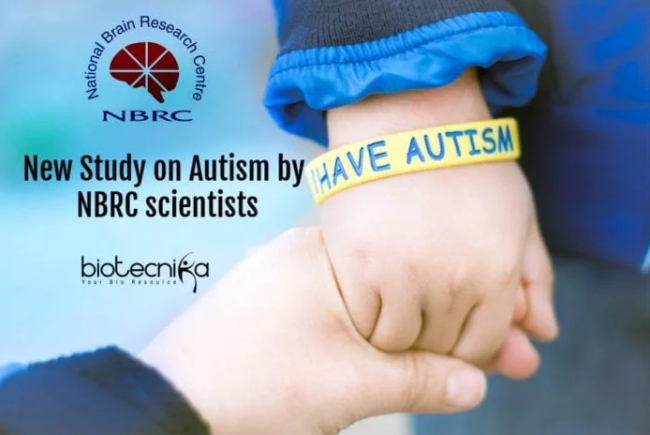New Study on Autism by NBRC scientists
A neurodevelopmental disorder, Autism spectrum disorder (ASD) or Autism is a disorder where the brain development goes awry, while another neurodevelopmental disorder, Intellectual Disability (ID) is a disorder where patient displays low intelligence quotient (IQ) with decreased ability to make decisions, solve problems, reason, and learn.
On a global scale, both ASD and ID pose a huge socio-economic burden. However, to study them, there are no human-based models yet. Thus, the knowledge required to design treatment strategies is lacking as there is a lack of knowledge of their pathophysiology.
Now, this gap has been filled by the scientists at the National Brain Research Centre at Manesar, Gurugram. A new human-based model which will help the studies on how the brain develops, especially about what goes awry during brain development and about neurons, has been developed by the researchers.
This model focuses on small Ribonucleic Acid molecules called miRNAs or microRNAs. Ranging from plants to humans, these miRNAs are present inside every cell. They control the protein expression in cells as they regulate the expression of genes. In a developing nervous system, they are expressed in great numbers. Popularly known as human neural stem cells, these stem cells are present in everyone’s brain. The miRNAs play an important role in determining the fate of these stem cells. The exact manner by which the miRNAs affect the stem cells is however not figured out yet.
In determining the fate of human-induced pluripotent stem cells (iPSCs)-derived neural stem cells (hiNSCs), a new model by the scientists at NBRC is used to investigate the role of miRNA-137, a brain enriched miRNA. To study neurodevelopmental disorders, the iPSC derived NSCs are considered ideal models because from a patient’s blood, one can derive iPSCs and inducing NSCs from them is possible. Since the miRNA-137 is downregulated in ASD and ID, the researchers chose to study miRNA-137.
Dr. Yogita K. Adlakha, the leader of the study team said, ” Elaborating the underlying molecular mechanism, the crucial roles of miRNA-137 in determining the fate of human neural stem cells is demonstrated in our study. The first evidence that the proliferation of human neural stem cells is inhibited by miRNA-137 while their differentiation towards neurons is enhanced, is provided in this study. We observed during the study that miRNA-137 induces mitochondrial fusion and fission events along with accelerating mitochondrial biogenesis. For the newly born neurons, increased mitochondrial content is necessary and this actually resulted in increased mitochondrial content. We propose that the design of treatments for aging-associated neurodegenerative diseases and ASD and ID can be facilitated by the neural stem cell differentiation induced by miRNA-137.”
Their work’s report has been submitted to the journal “Stem Cells”, an international peer-reviewed journal and the journal has accepted it for publication. The study team included Yogita K. Adlakha, Pankaj Seth, Kamika Gupta, Bijay Pattnaik, Tanya Singh, and Asha S. Channakkar.

